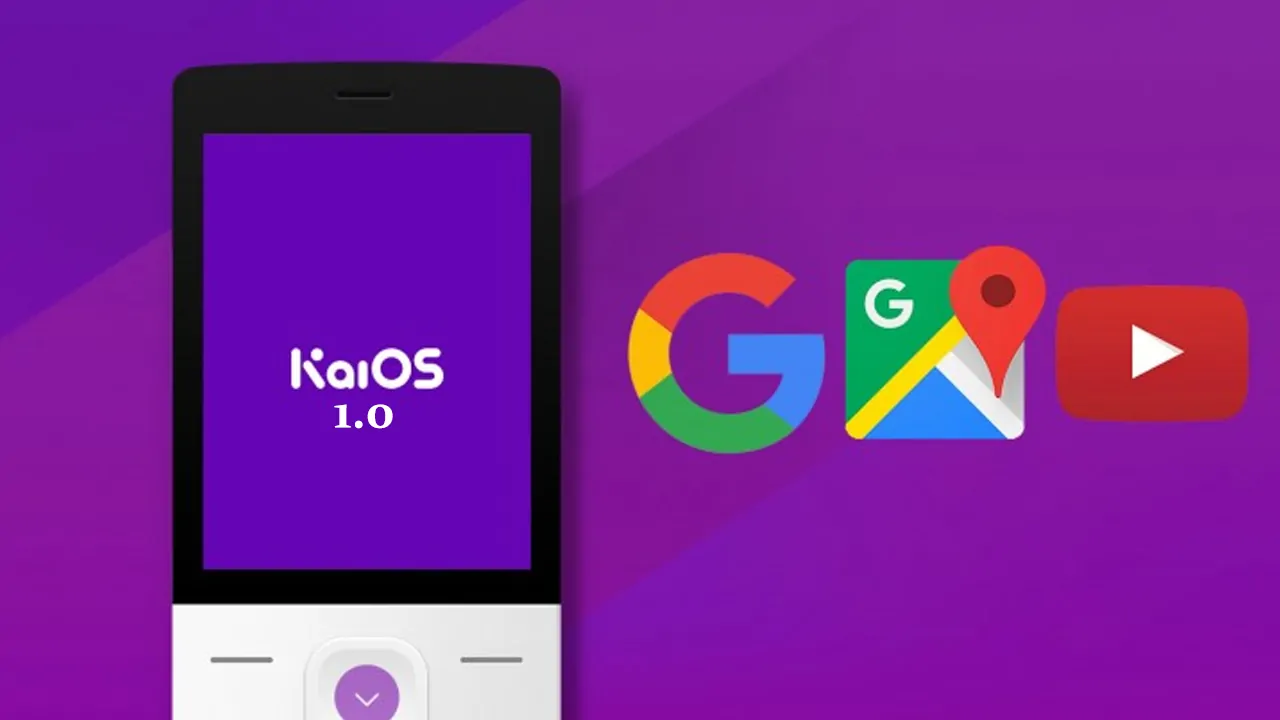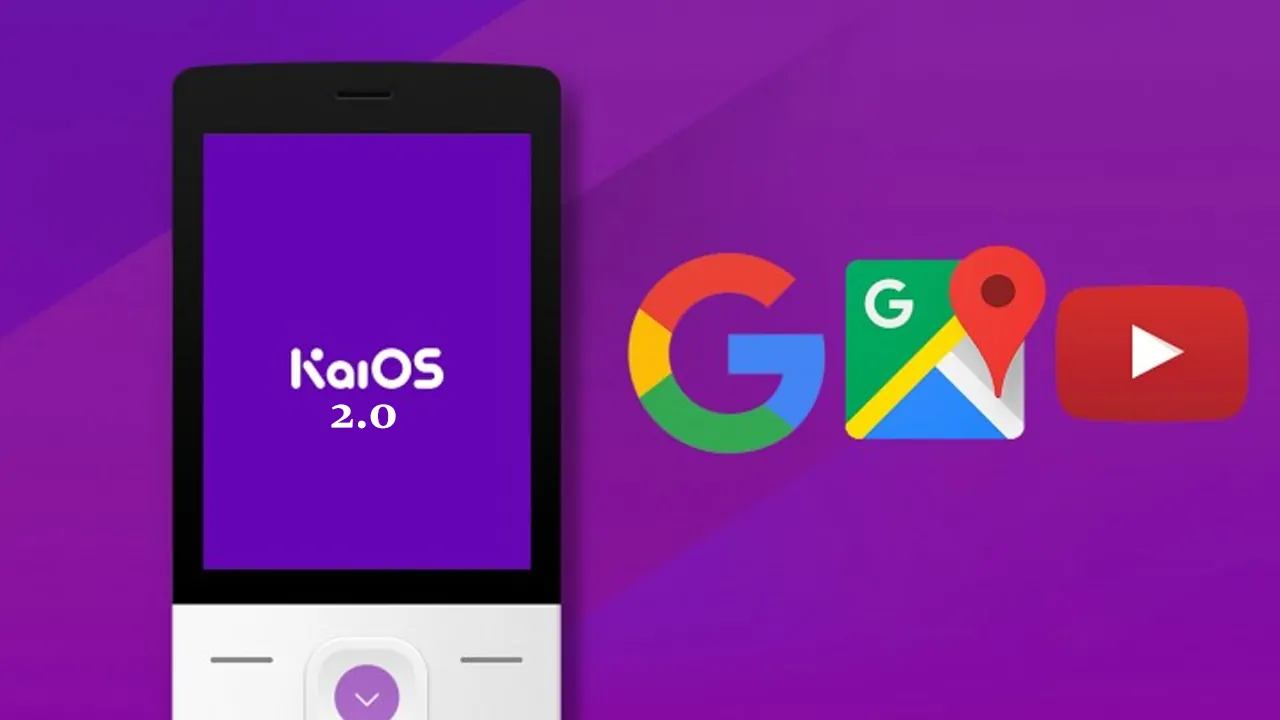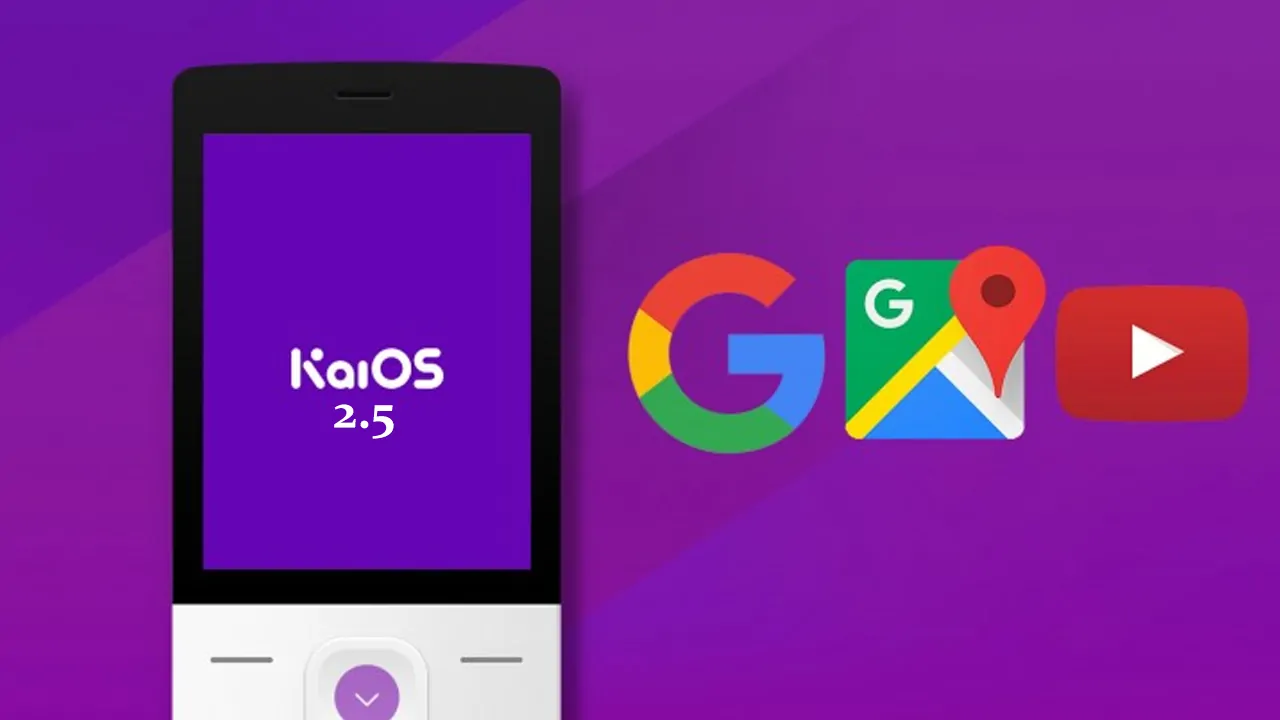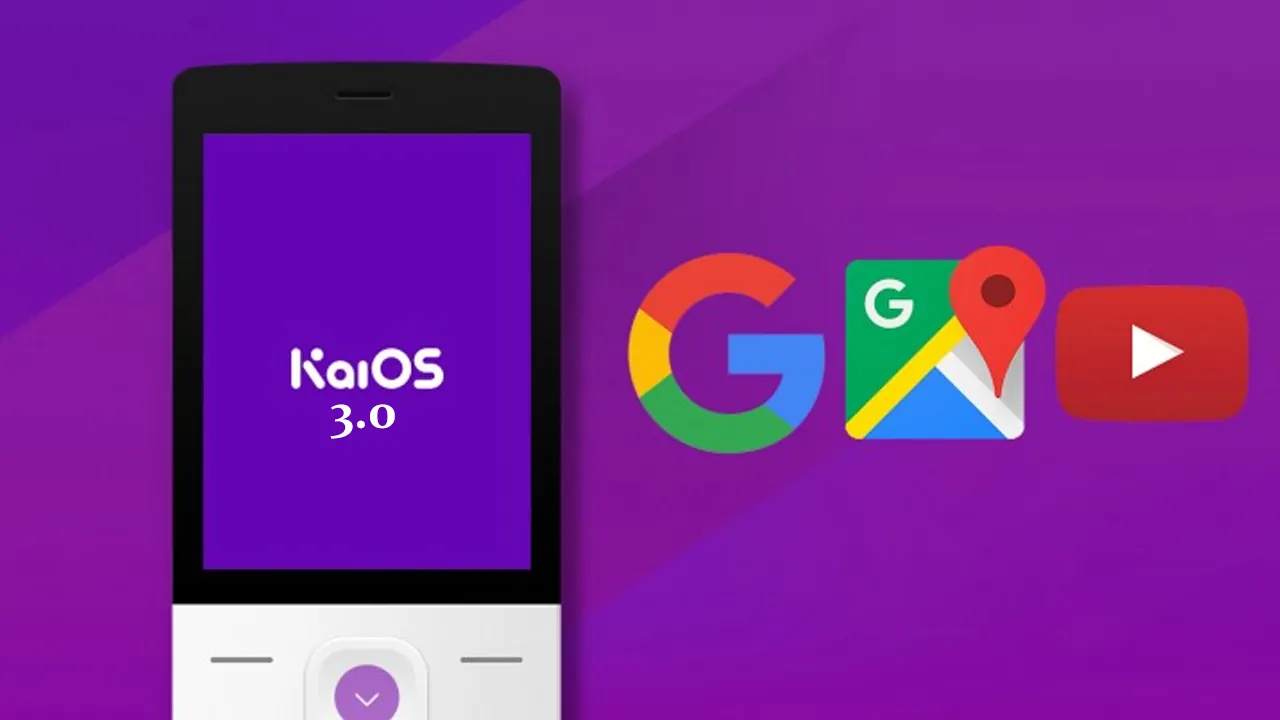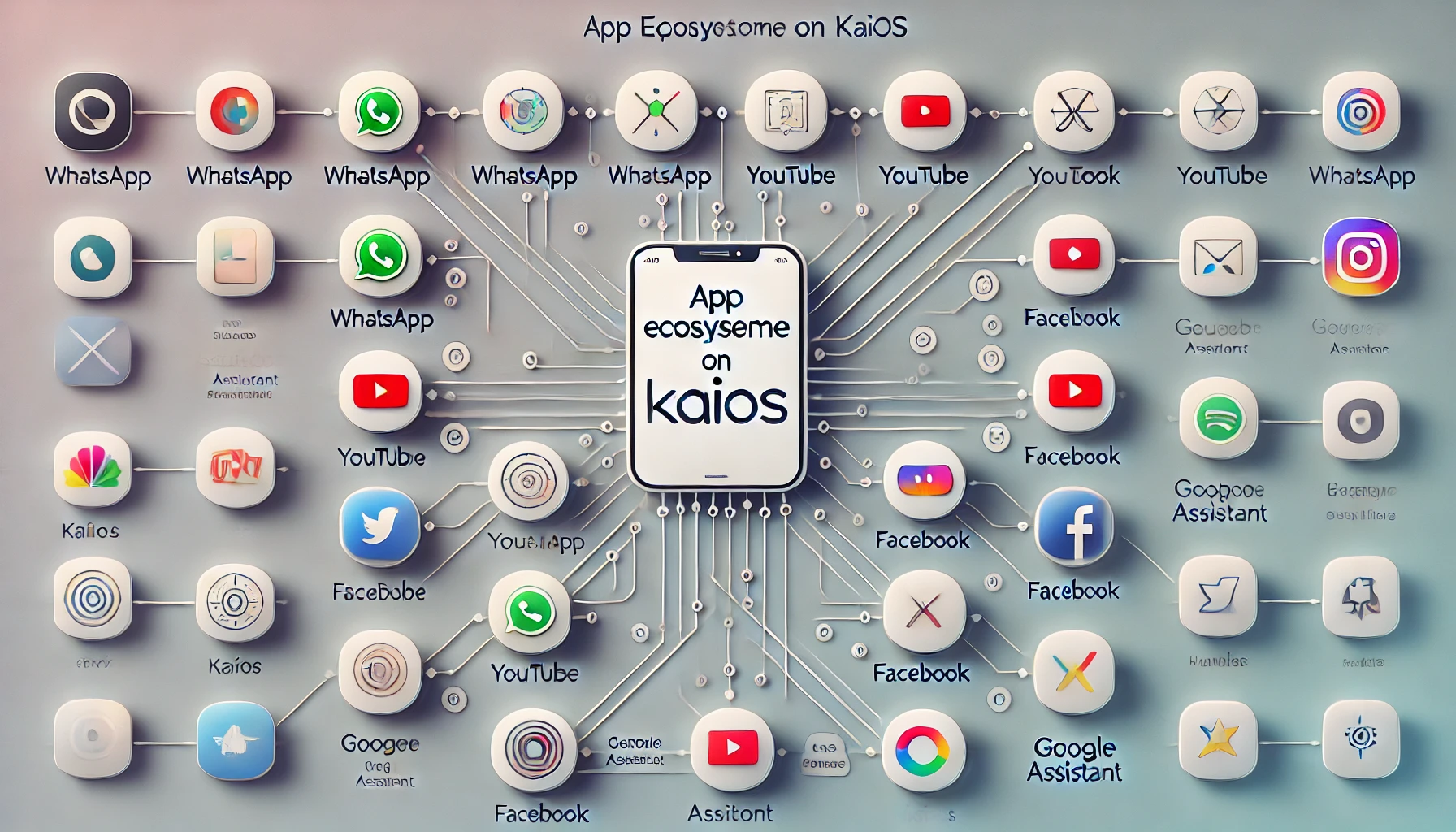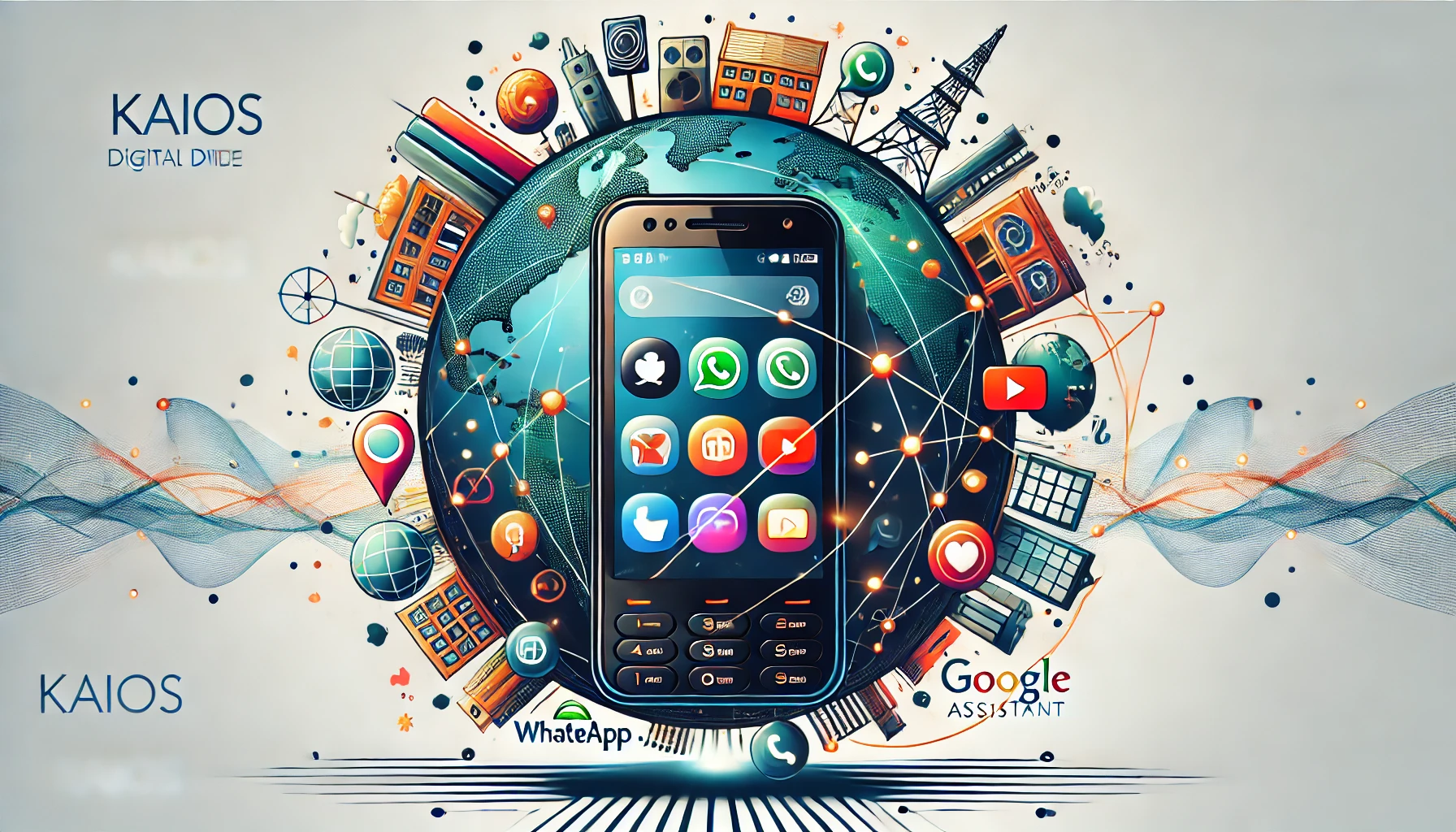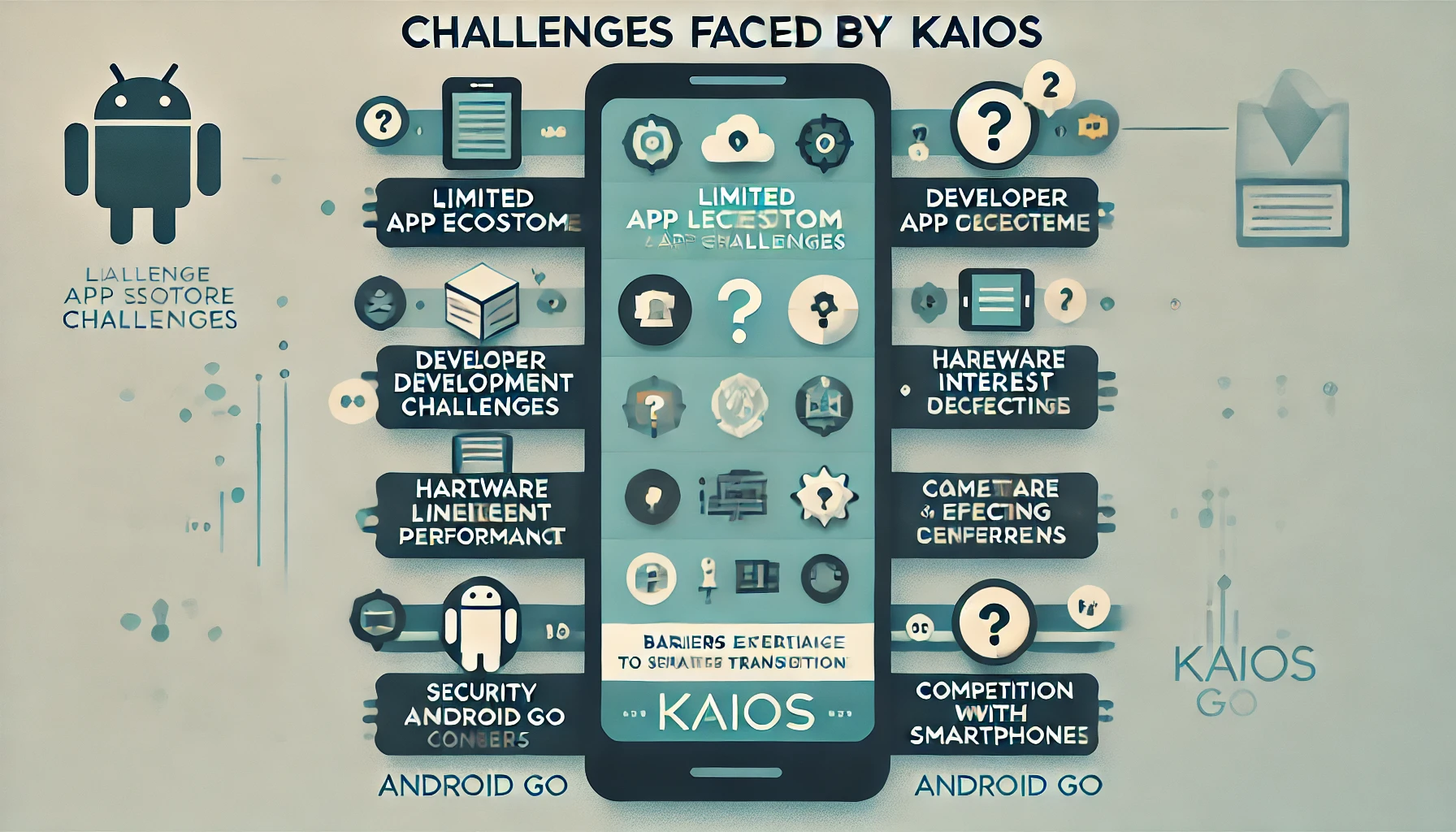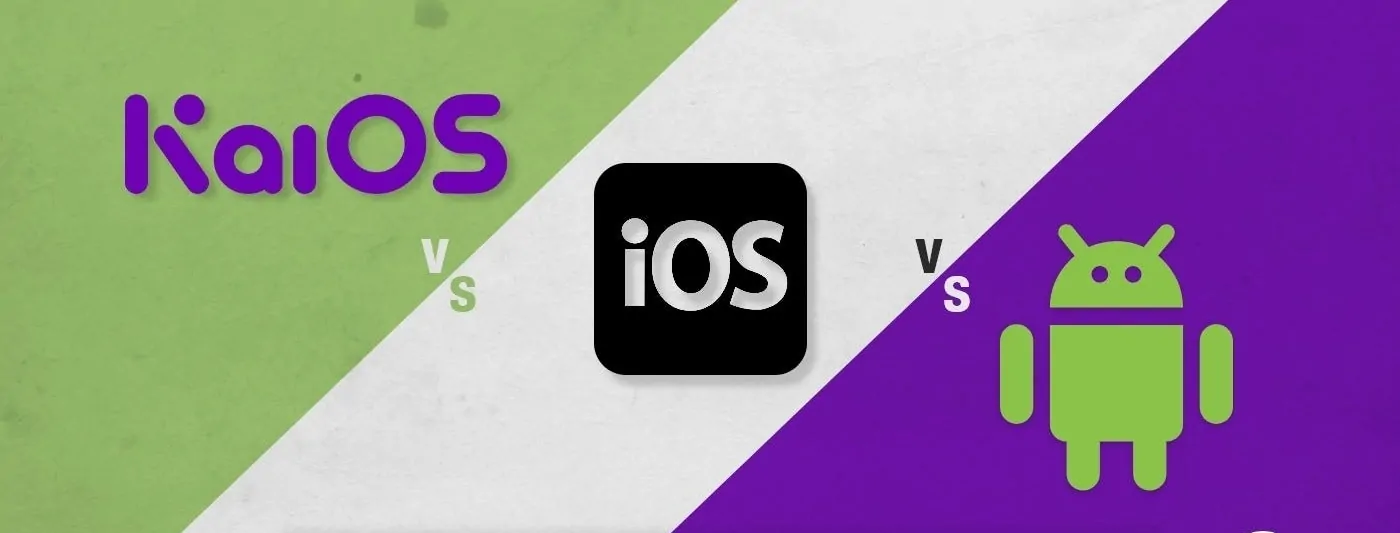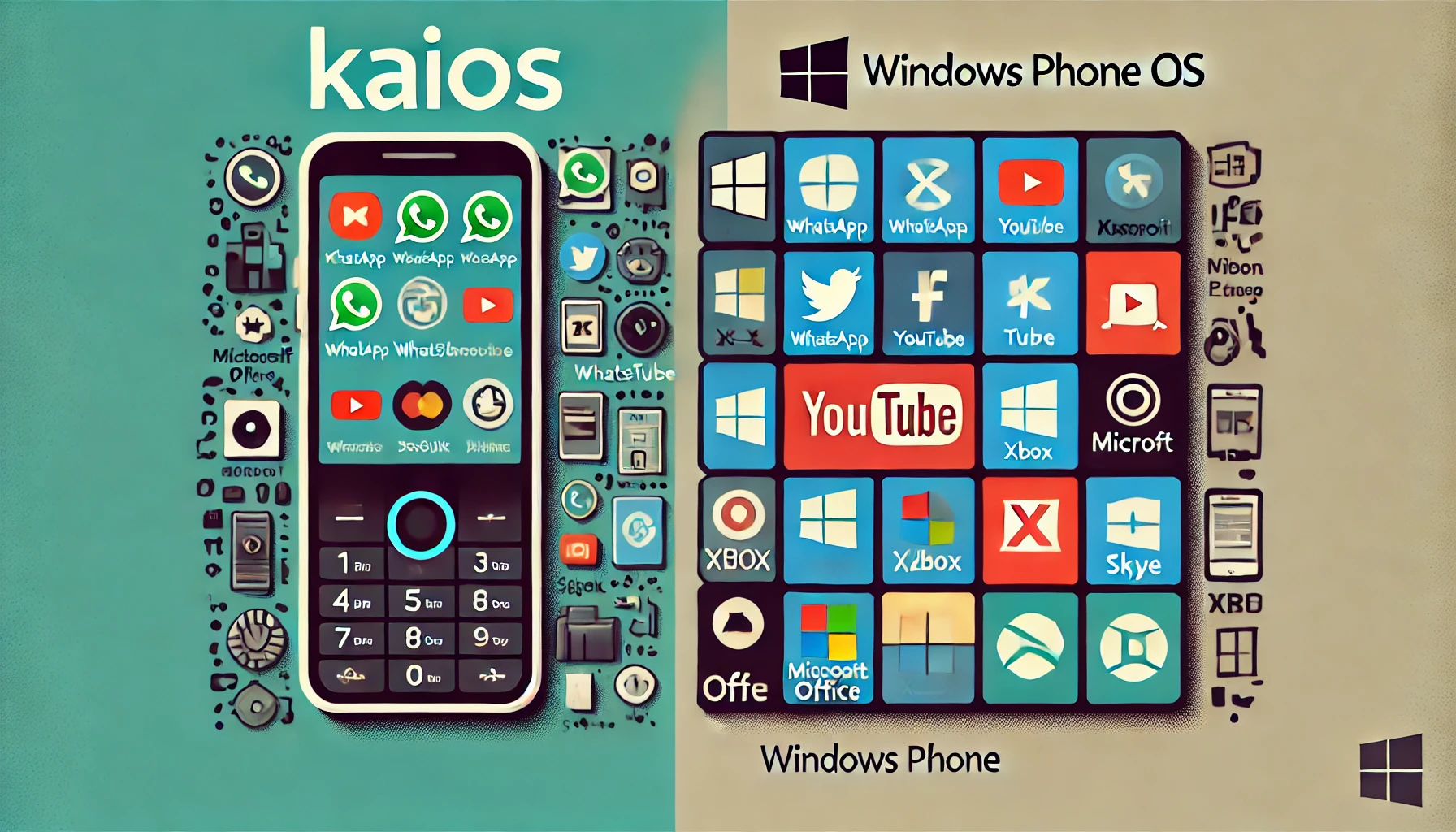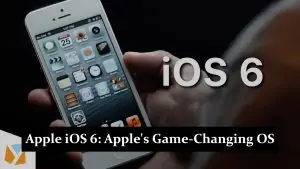KaiOS is a mobile operating system designed for feature phones, providing smartphone-like functionality on more affordable devices. As the third-largest mobile OS globally, it bridges the digital divide, offering essential apps like WhatsApp, YouTube, and Google Assistant to millions who may not have mobile phone access. Its importance lies in its ability to connect emerging markets with the internet, expanding education, communication, and business opportunities. This blog will explore the significance of KaiOS, key features, and its role in transforming global connectivity.
Versions of KaiOS
KaiOS 1.0
KaiOS 1.0 was the first version of this mobile operating system, introduced in March 2017 to bring smart functionality to feature phones. It offered basic internet connectivity, essential apps, and a user-friendly interface for low-cost devices. The primary focus was to bridge the gap between smartphones and feature phones, targeting emerging markets.
KaiOS 2.0
Released in April 2018, KaiOS 2.0, the platform saw significant improvements in in-app support, allowing popular applications like WhatsApp and Facebook to be used on feature phones. Enhanced security features were also introduced, ensuring safer browsing and transactions while expanding the OS’s reach to a broader global audience.
KaiOS 2.5
KaiOS 2.5 was released in December 2019. It brought significant changes in user interface design, making the OS more intuitive and accessible. The app ecosystem was further expanded, adding more third-party applications, while localization efforts were made to tailor the OS to various languages and regions, improving its global adaptability.
KaiOS 3.0
KaiOS 3.0 was released in June 2021. It represents the latest iteration, featuring enhanced performance and new tools for developers to create optimized apps for feature phones. This version includes further refinements in usability, improved app support, and more advanced system tools that make the platform smoother and faster, continuing to grow its relevance in global markets.
Features of KaiOS
Lightweight and Efficient Operating System
KaiOS is designed to be a lightweight and efficient OS, perfect for feature phones with limited hardware capabilities. It operates smoothly on devices with as little as 256MB of RAM, offering essential smartphone-like functionalities without overburdening the system.
App Store and App Compatibility
KaiOS comes with its app store, the KaiStore, offering a wide range of apps, from social media platforms like WhatsApp and Facebook to essential tools like Google Maps. The OS is optimized to ensure app compatibility even on lower-end devices, making it highly versatile.
Dual SIM Support
KaiOS supports dual SIM functionality, allowing users in emerging markets to manage multiple networks or phone numbers on a single device. This feature is particularly useful in regions where individuals use different carriers for better coverage or cost-saving purposes.
Battery Life Optimization
KaiOS’s core feature is battery efficiency, enabling devices to run for days on a single charge. Its lightweight nature and optimized power management extend battery life, making it ideal for areas with limited access to charging facilities.
Accessibility Features for Emerging Markets
KaiOS is designed with accessibility in mind, particularly for users in emerging markets. It includes features like text-to-speech, support for various regional languages, and simplified interfaces, ensuring that even first-time internet users can easily navigate and use their devices.
Popular Devices Powered by KaiOS
- Nokia 8110 4G (“Banana Phone”): Known for its iconic design, the Nokia 8110 4G, popularly called the “Banana Phone,” is a standout KaiOS device. It offers 4G connectivity, access to apps like WhatsApp and Google Assistant, and a nostalgic sliding cover.
- JioPhone Series: The JioPhone series, particularly popular in India, is powered by KaiOS and offers affordable internet-enabled feature phones. With built-in apps like WhatsApp, YouTube, and Facebook, these phones have brought digital connectivity to millions.
- Alcatel Go Flip 3: The Alcatel Go Flip 3 is another popular KaiOS device, favored for its compact design, 4G LTE support, and access to essential apps through the KaiStore. It is widely available in the North American market.
- Other Popular KaiOS Devices: Other notable devices include the CAT B35, a rugged phone built for durability, and the Doro 7050, a senior-friendly phone. Both offer KaiOS’s signature features like dual SIM support, long battery life, and essential apps for communication and productivity.
The App Ecosystem on KaiOS
Key Apps Available on KaiOS
KaiOS offers a growing app ecosystem with essential apps like WhatsApp, Facebook, YouTube, and Google Assistant. These apps allow users to stay connected, access media, and perform searches just as they would on smartphones, bringing vital services to feature phones.
Limitations of the App Store
While the KaiStore is expanding, it still has limitations compared to major smartphone platforms like Android and iOS. The number of apps is smaller, and some popular apps may be out of stock. The app quality can vary, and the limited hardware of KaiOS devices restricts the complexity of apps that can run smoothly.
How Developers Are Embracing KaiOS
Developers are increasingly embracing KaiOS due to its reach in emerging markets and unique position in the mobile ecosystem. Many are creating lightweight, efficient apps tailored to user’s needs in these regions. This has led to a growing developer community that continues to innovate and expand the platform’s app offerings, providing essential tools and entertainment to millions of new Internet users.
KaiOS’s Role in Bridging the Digital Divide
Empowering Users in Emerging Markets
KaiOS is crucial in empowering users in emerging markets by providing affordable, internet-enabled feature phones. It enables access to essential digital services like communication, education, and financial tools, opening up new opportunities for millions who need help affording smartphones.
KaiOS’s Contribution to the Growth of 4G Feature Phones
KaiOS has significantly contributed to the rise of 4G feature phones by delivering an operating system that supports high-speed internet while running on low-cost hardware. This has allowed feature phones to offer modern connectivity without the expense of a full-fledged smartphone, making 4G networks accessible to a broader audience.
Affordable Technology for Developing Countries
KaiOS is instrumental in bringing affordable technology to developing countries, where the cost of smartphones and data plans can be prohibitive. By offering a lightweight OS with essential apps and services, KaiOS has become a bridge for those transitioning from basic phones to more advanced digital experiences, helping reduce the global digital divide.
KaiOS User Experience
User Interface
KaiOS features a simple and intuitive user interface designed to mimic the ease of traditional feature phones while incorporating modern app-based functionality. The interface uses a grid-based layout to easily access apps and settings, with familiar navigation using soft keys and directional pads.
Navigation on KaiOS is user-friendly, especially for individuals accustomed to feature phones. The OS relies on minimalistic design principles, with straightforward menus and quick access to essential apps. Users can easily navigate between apps and settings without a cell phone experience.
Performance on Low-End Hardware
KaiOS is optimized for low-end hardware, ensuring smooth performance even on devices with limited memory and processing power. It operates efficiently, with minimal lag, and is designed to run essential apps without overloading the system. This makes it a practical choice for users in regions with inaccessible high-end devices.
Challenges Faced by KaiOS
- Limited App Ecosystem Compared to Major OS Platforms
KaiOS’s app store is smaller and needs more variety of apps available on platforms like Android and iOS, which may limit user engagement and satisfaction. - Developer Interest and App Development Challenges
Attracting developers to create apps for KaiOS can be challenging due to the limited hardware and smaller user base compared to major platforms. This may reduce incentives for investment in the ecosystem. - Hardware Limitations Affecting Performance
KaiOS devices often have limited memory and processing power, impacting app performance and overall user experience, especially when trying to run more demanding applications. - Security and Data Privacy Concerns
While KaiOS incorporates security measures, the growing user base in emerging markets may attract more sophisticated cyber threats, posing security and data privacy challenges. - Competition with Android Go in Emerging Markets
KaiOS faces stiff competition from Android Go, which also targets the low-cost device market. Android Go offers a more comprehensive app ecosystem, making it an attractive alternative for budget-conscious consumers. - User Experience Barriers to Smartphone Transition
Users transitioning from feature phones to smartphones may find that KaiOS’s simplified user experience needs to be improved, potentially hindering their future adjustment to more advanced mobile platforms.
Comparison with Other Mobile Operating Systems
KaiOS vs Android
KaiOS and Android serve different market segments, with KaiOS focusing on providing smartphone-like features on feature phones and Android catering to both budget and premium smartphones. While Android offers a vast app ecosystem and more powerful hardware options, KaiOS excels in low-cost devices, particularly in emerging markets. Android supports a broader range of applications and customization, while KaiOS is optimized for minimal hardware with essential apps like WhatsApp and YouTube.
KaiOS vs iOS
KaiOS and Apple iOS represent two extremes in the mobile operating system market. iOS is designed for high-end devices with advanced features, security, and a premium app ecosystem, while KaiOS is focused on affordability and simplicity for feature phones. iOS offers a seamless experience with cutting-edge technology, whereas KaiOS prioritizes bringing internet access and essential services to those with limited resources. The comparison highlights iOS’s sophistication versus KaiOS’s focus on digital inclusivity.
KaiOS vs Windows Phone OS
Windows Phone OS, now discontinued, targeted smartphones with a unique tile-based interface and a focus on integration with Microsoft services. In contrast, KaiOS is designed for feature phones and provides basic smart functionalities on minimal hardware. While Windows Phone OS offered a more robust smartphone experience, it needed to gain traction in the competitive mobile market. KaiOS, however, thrives in a niche by serving emerging markets with essential connectivity and lightweight applications on lower-end devices.
Conclusion
KaiOS has significantly impacted by bringing smartphone-like functionality to affordable feature phones, particularly in emerging markets. It provides essential apps with efficient performance on low-end devices and helps bridge the digital divide. While it faces challenges like a limited app ecosystem and competition from platforms like Android Go, its role in expanding global connectivity cannot be overstated. KaiOS’s continued growth will depend on further innovation, app development, and its ability to adapt to evolving user needs.

